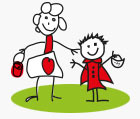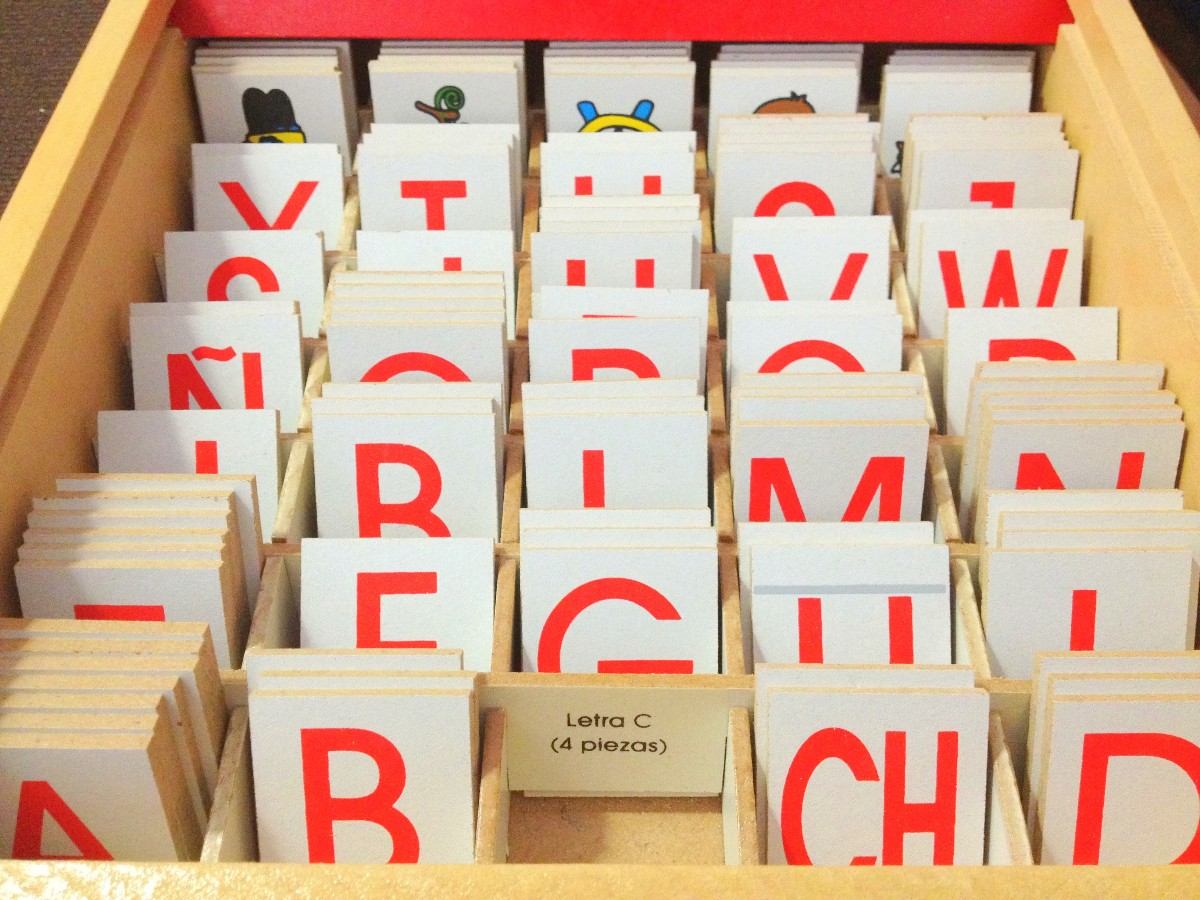

Nursery education project Txanogorritxu / Little Red School Children - The Doman method for teaching reading to babies and children.
The key sessions of early stimulation is that must be completed before the child loses interest. It must be left wanting more, otherwise, it will end up bored as with normal games.
The key sessions of early stimulation is that must be completed before the child loses interest. It must be left wanting more, otherwise, it will end up bored as with normal games.

Methods based reading Glenn Doman indications lead from the mid-60s of the twentieth century, applied in many countries and in several languages with excellent results, including special education children who have obtained surprising results.
Children can read words when they have a year sentences when they have two
entire books when they are three years and love it. The key is to learn while having fun.
Materials we use
To teach reading to babies or children use some booklets, constructed of cardboard or paper stronger than material as we need to be strong and durable.
It is best to use block letters or print, large, red or black color. The latter varies with the font size depending on the age of the infant or child
Each book takes a word, organized by category, such as:
- Body parts: head, foot, hand, Guts ... etc.
- Family: Dad, mom, brother, cousin, uncle ... etc.
- Baby Belongings: Bottle, pajamas, rattle ... etc.
- Nursery: table, chair, ball, teacher ... etc.

All these words will related, "from the known to abstract". That is, from what the baby and called his hands, belly, feet, head and belongings as your pajamas, baby bottle, diaper. We will continue a bit more externally with words like dad, mom, brother. The next step will be proper names, things around the house and the nursery, outer elements known as the small park, etc.
So, until you reach the "abstract" things like that and be names of animals, plants, trees... things that may not have regular contact.
How Primers used
And consistency is important, especially fun
We work with groups of 5 booklets of the same related category (head, foot, hand, guts ... etc.).
The 5 (or more) primers are shown together in front of the baby at the right distance and are passed one by one, saying the name of each card with strong and clear voice for the baby to see and hear every word. Every day, we added a new group of 5 words until they are in total 5 groups. After that each group added is replacing an older.
We do 3 sessions per day, so the baby will show every word 15 times. It will be enough for the baby to learn.

Each book takes a word, organized by category, such as:
- Body parts: head, foot, hand, guts ... etc.
- Family: Dad, mom, brother, cousin, uncle .... etc.
- Baby belongings: bottle, pajamas, rattle ... etc.
- Nursery: table, chair, ball, teacher ... etc.
How we work with the method according to the age of the infant or child:
Very young babies (2-18 months):
Babies do not have well developed sight until about eight months, so that your brain needs to be stimulated in the right way.
One way to prepare the baby for reading is encouraging their view, this is done playing with him or her in these ways:
- Passing on flashy toys and making the resume your view.
- Playing hide and seek with baby.
- Covering a toy with a blanket and try to find the baby.
Primer right size: 15cm x 60cm (Large).
Font: Height 12cm, 2cm thick and red.
Right away about 45cm from your face.
Good lighting to the floor.
Children 18 months and older
Having developed its eyes, "visual stimulation" at the beginning is not required.
In addition, the charts can now be a little smaller. To gradually reduce its size, the color red is no longer sufficient contrast, so we use black color.
Proper size primer: 10cm high x 60cm long.
Font: 7.5cm tall, 1 to 1.5cm thick and black.
Right distance: 50cm to 1m his eyes.
Children over 3 years
With children 3 years and older the case is a bit different, because the child does not "like a sponge absorbs" all the knowledge that he is shown.
They have a great capacity but we have certain definite tastes, know what I do and what not interested and so we have to introduce a slight variation: Use words about what the child likes.
They can be your hobbies, hobbies, characters, stories he likes... For example, if the child fascinated by animals, could start with that.


